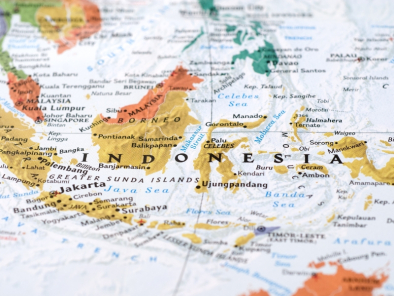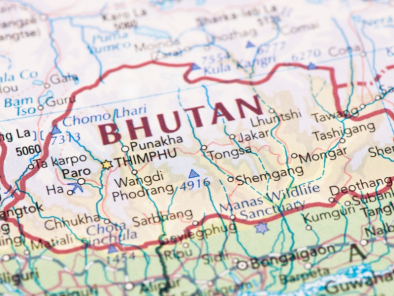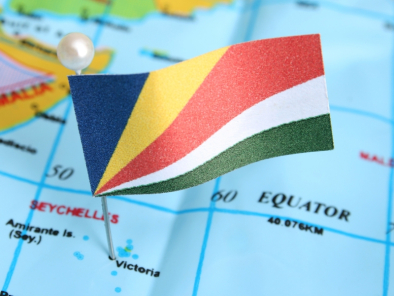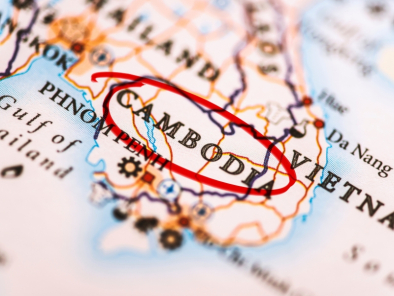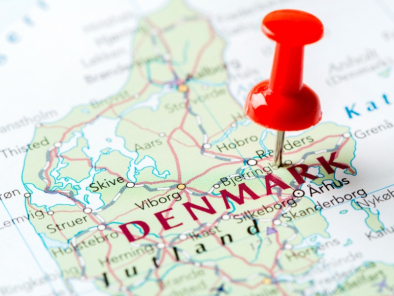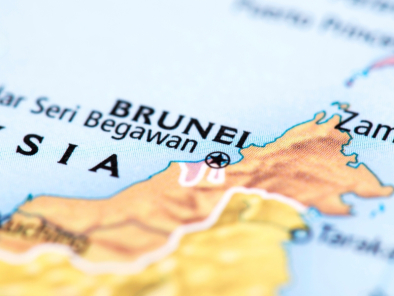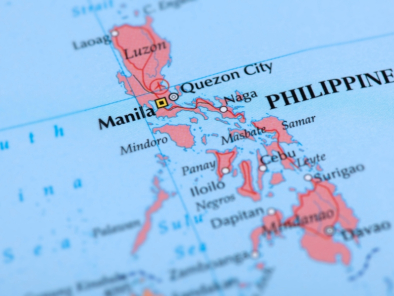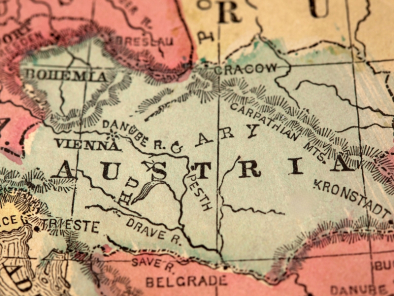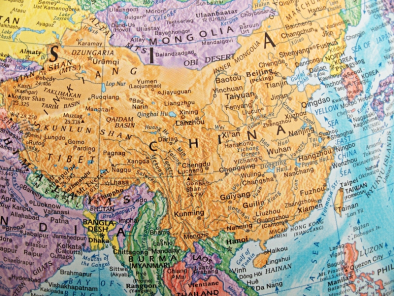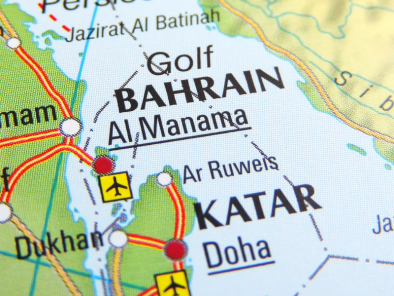
Posted by: Leo Travel Hub
TRAVEL
TIPS ON BAHRAIN
Allegedly
the origin of the Biblical Garden of Eden, the lush, verdant island of Bahrain
evokes a sense of both myth and history.
As
the centre of the ancient Dilmun civilisation, Bahrain offered a safe haven to
maritime travellers thanks to its many springs of fresh water, and it remains
an oasis for modern day visitors who find a little paradise here filled with
beautiful beaches, luxurious hotels, good food and fascinating history.
Located on Bahrain Island, by far the largest of this small archipelago, the capital Manama is a modern, fast moving city with high-rise buildings and wealthy citizens. Wander between the skyscrapers though and you'll find yourself in the true Arabian world of the souk, where market vendors ply their trade among towers of multi-coloured spices and exotic fruits, glittering jewels and luxurious silks. This irresistible scene is also home to numerous coffee shops where old men pass the day sipping tiny cups of the pungent local brew.
Throughout the country, you'll find remains of the country's long, illustrious history in the form of royal tombs and ancient forts and temples, some of them dating back to the third millennium BC. Equally fascinating to anyone with even a passing interest in architecture are the beautiful 19th-century traditional houses of former wealthy royals and business people that are now open to the public, or the National Museum in Manama with its wealth of Bahraini treasures.
Many visitors to Bahrain come predominantly to make the most of the country's sunny climate and there are certainly plenty of opportunities to do this. The islands are endowed with some spectacular beaches and the clear blue waters are ideal for diving, snorkelling or just cooling off from an arduous session of sunbathing.
Visa: The visa is to be obtained prior to arrival in the country
Flights
Gulf Air flies into Bahrain directly from Mumbai.
Climate
Tourist
brochures warn visitors away from the intensely hot summer months (early June
to mid-September), when the sea is flat and vaporous, the cold tap runs hot and
even the grass is too peppery to walk on. Yet, in many ways, this is Bahrain's
most characterful time of the year: it's when you realise the importance of a
wind tower, or a well in the desert, or a headscarf to keep out the hot, dry
winds of a dust storm. If braving the extreme heat and humidity doesn't appeal,
the best time to visit is November to March, avoiding Ramadan and Eid holidays,
when an influx of Saudi tourists can make it hard to find a room.
Weather
It can get extremely hot and humid in Bahrain from June to September, with high temperatures averaging 38°C (100°F) during the day. November to March tends to be much more pleasant, with warm days, cool nights and negligible rainfall.
Currency
The
currency in Bahrain is the Bahraini dinar (BHD). Coins are available in 5, 10,
25, 50, 100 and 500 fils, while banknotes come in ½, 1, 5, 10 and 20 dinars.
There are no restrictions on the import and export of Bahrain dinar and other
foreign currencies.
On arrival in Bahrain, visitors can exchange currency at the airport, where a number of banks and bureaux de change can be found. Alternatively, all major towns in Bahrain as well as the capital, Manama, have bank branches with currency exchange services. The main banks include the National Bank of Bahrain; Bank of Bahrain and Kuwait; Al-Ahli Bank and Gulf International Bank. ATMs are widespread across Bahrain and accept most major credit cards. They can be found in most shopping centres and the financial districts. Credit cards are accepted in many of the large department stores, but if you are thinking of shopping at the souks, only cash is an accepted form of payment.
Banks are open from 07:30 to 14:00 from Sunday to Wednesday, although some branches are also open in the evenings. In addition, banks are open from 07:30 to 13:00 on Thursdays, but all are closed on Fridays and Saturdays. They are also closed on public holidays.
Customs
Visitors can import up to 400 cigarettes, 50 cigars and a ¼ kilo of tobacco; eight ounces of perfume; one litre of alcoholic liquor; six cans of beer and gifts up to the value of BHD 250. A special import permit is required for the following items: arms and ammunition, mentholated spirits, intoxicating drugs and jewellery.
Electricity
220V/50Hz
UK plug
The country code for Bahrain is 973.
Getting Around:
Taxis:
Taxis are readily available in. For your own information, you should get a copy
of the booklet Taxi Fares and Tourist Information Guide, which is available
free at the tourist office. The booklet contains a complete list of the
official taxi rates in both Arabic and English. However, the official fares do
increase between midnight and 05:00 am, and a taxi hired at the airport
normally costs an extra dinar.
Unofficially, hiring a taxi by the hour costs about BD5, and for this price the
driver should take you wherever you want to go and also wait for as long as you
like.
Generally speaking, in Bahrain and in all other Arab countries, it is a good
idea to agree on the fare in advance unless the taxi has a meter.
Buses:
As Bahrain is relatively small, it is not a difficult place to get around.
There is a good bus system which links most of the towns on the island to both
Manama and Muharraq. The fare is normally a flat 50 fils per trip.
Buses run from 5.30 or 6.30 in the morning until about 9.30 in the evening.
There is some variation in both trip frequency and beginning and ending of
service times. These can be verified at the terminals in either Manama and
Muharraq.
Bahrain has a local bus service with a standard rate of BHD0.50 per ride. The
routes connect Manama's bus station on Government Avenue with the outlying
towns.
A 16-hour passenger service connects Iran and Bahrain. Tel: +973 250-833.
Flights: There
are no internal flights in the country.
Cars
Cars can be rented for about BD15 per day. Bahrain is the only country in the
Gulf where foreign driving licences cannot be used to rent cars. Bahraini law
requires an International Driving Licence, which must be obtained prior to
arrival in Bahrain. Foreigners resident in other GCC countries, however, can rent
a car using the licence from their county of residence.
Bahraini law requires drivers and people riding in the front seats of cars to
use seat belts. There is a fine of BD10 for violating this law.
Speed limits are enforced and drunk driving laws are strict.
Religion:
Although Islam is the state religion and 85% of the population are Muslims,
there are also Christians, Jews, Bahais, and Hindus. Each group is free to
practice its religion.
Language:
Arabic is the official language of Bahrain. Farsi is not uncommon, and
English is widely used in business.
Clothes:
Lightweight clothing is suitable for May - October. Medium-weight clothing is
suitable for November - April. Sunglasses are necessary. Bahrain is very modern
in its approach to everyday life. While no formal dress code is imposed, for
the sake of courtesy and common sense, visitors should dress sensibly when in
town. This means, shorts are not normally acceptable for either sex, and women
should not wear short, low- cut, backless or sleeveless dresses which may give
offence to some members of the local community.
Bahrain
National Museum
The
Bahrain National Museum proudly displays the remnants of its rich cultural and
heritage. A visit to the national museum of Bahrain will take the visitors to
the ancient and medieval Middle Eastern world. The 6000 years of Bahrain,
history is well projected in every section of this museum. While visiting the
Bahrain National Museum the tourists can also take a tour of the aquarium,
exhibition halls and the national library, which are located in the same civic
complex.
A
significant portion of the Bahrain National Museum is dedicated to the ancient
Dilmun civilization. The archeological ruins and the artifacts of the past are
the main components of the displays in this museum.
A
must-see for history buffs, the National Museum is a treasure trove of
archaeological finds and Bahraini cultural artefacts.
The
collection includes, most impressively, a whole excavated tomb as well as
exquisitely carved seals and Sumerian, Babylonian, and Assyrian inscriptions
that document Bahrain's trading history. Look out additionally for the dioramas
of Bahraini crafts, traditional paintings, ceramics and numerous religious
documents including exquisite illuminated Korans.
Intersection of Muharraq Causeway and King Faisal Highway, Manama. Open: Sat/Sun/Tue 08h00-14h00; Wed/Thu 08h00-14h00 and 16h00-20h00; Fri 15h00-20h00.
Tree of Life
in Bahrain
The
Tree of Life in Bahrain is one of the mysteries of world, which is bound to be
in your sightseeing list while in this Middle Eastern country. The Tree of Life
in Bahrain is four century old mesquite tree which survives in the midst of
desert. The mystery of the survival of the tree has made it a legend. People
from all over the Middle East and the world make it a point to visit this place
to see this magic of nature. The name “tree of life” is absolutely appropriate
for the tree as it truly represents the magic of life. A legend is also
attached to the site where the tree is located. The local inhabitants believe
with heart and soul that this was the actual location of the Garden of Eden.
The Tree of Life of Bahrain is located 1.2 miles or 2 kilometers away from Jebel Dukhan. The tree stands all alone in the heart of desert and from far away it looks like a green spot in the white desert. While going to this place extra caution should be taken to avoid your car from getting stuck in the sand. There are very less habitation near this place as this is in the midst of the desert.
Arabian Gulf
Arabian
Gulf , or al-Khaleej al-Arabi in Arabic, is situated between the Arabian
Peninsula and Southwest Asia. It is linked by the Straits of Hormuz towards the
Arabian Sea which is the northwestern segment of the Indian Ocean. This is
measured that the Arabian Gulf is approximately 615 miles long and possesses a
maximum width of 210 miles. The Arabian Gulf occupies the area of about 93,000
square miles.
The
shallow water of the sea is with a most depth of about 350 feet, and due to
such minimum depth high waves do not develop. In spite of high temperatures and
dampness, the Arabian Gulf seldom experiences tempest and gale winds, and this
is the main distinction from the Red Sea. This is notable that for various
centuries those two sources of water served as principal way of communication
between the famous culture of the East as well as the Mediterranean region.
The
countries which are bordering the Arabian or Persian Gulf include United Arab
Emirates, Qatar on a peninsula off the Saudi coast, Bahrain on an island, Iran,
Iraq, Kuwait and Oman. Numerous small islands are scattered amid the Arabian
Gulf or the Persian Gulf.
The region of Persian Gulf and its inshore areas are known as world's biggest and prime single source of petroleum. Al-Safaniya, the world's leading offshore oilfield, is situated amid the Persian Gulf or the Arabian Gulf.
Bahrain
Causeway or King Fahd Causeway
Bahrain
Causeway or King Fahd Causeway is in all probability the most impressive road
construction project of all in Bahrain. It is found that the construction of
the King Fahd Causeway is linking up the island of Bahrain with the Saudi
Arabian terra firma. This Bahrain Causeway is a four-lane highway, with about
25 meters of width and approximately 26 kilometers of length.
The
entire costing and the expense of the construction work about US$ 1.2 billion
were contributed by the Kingdom of Saudi Arabia. This fabrication process of
Bahrain Causeway was accomplished in the year of 1986 and next the Causeway was
opened up for the traffic at the last part of the year.
The
statistics of 2001 suggests that more or less 2.7 million cars, transporting
over 10 million of commuters, had used this Bahrain Causeway.
The
four-lane road (with forty ft) is of 25 kilometers of length. Five bridges with
an average length of 40,781 ft were constructed using about 350,000 cubic
meters of concrete in addition to 147,000 metric tons of unbreakable steel
material.
The
Bahrain causeway comprises with three segments, an assemblage of three
bridgeworks from Khobar to the artificial island on the country of Saudi Arabia
towards the border of Bahrain, including the longest bridge.
Bahrain Fort
Bahrain
Fort, one of the most eminent historical relics of Bahrain, is the witness of several
historic events and incidents of the island of Bahrain. Several names are used
to refer this marvelous fort of Bahrain. The gamut of popular names for Bahrain
Fort includes Qala'at al-Bahrain, Qalat al-Bahrain, Qal'at-al-Bahrain and
Qalaat al-Bahrain.
Bahrain
Fort is situated in Manamah, Bahrain and is regarded as an archaeological site.
This observed that the Fort of Bahrain is fabricated with an artificial heap
shaped and formed by the human residents from approximately the era of 2300 BC
to the 1700 BC.
Amongst the other things, the history suggests that a long time ago the fort was the capital of the Dilmun society and culture, and attended more in recent times as a Portuguese fort. For these grounds, it was decorated and considered as a UNESCO World Heritage Site since the year of 2005. Besides being an archeological site the Bahrain Fort (Qal'at al–Bahrainis) is admired as a historical fort also.
The very common saying about the fort suggests an artificial mound produced by many consecutive levels of human occupation. The excavations in this particular site of Bahrain Fort reveal and display a number of structural patterns and evidence of human existence. The array of structures shows public, residential, business, spiritual and military. This is also proved that the region was a merchandising port, over the centuries. On the peak of the twelve meter high mound, there is found the captivating Portuguese fort, which attribute the entire site its name of ‘qal'a'. The term of ‘qal'a' stands for fort. As the Bahrain Fort was the capital of the Dilmun, it holds the most prominent relics listed of this civilization, which was until now is just referred in Sumerian written compositions.
Royal Tombs
The
"Royal Tombs", site of the largest prehistoric cemetery in the world,
include an estimated 170,000 burial mounds.
Some,
from the Dilmun culture, date back 4,000 years to the third millennium BC, and
provide a fascinating glimpse of ancient burial practices. Other tombs date
from the Tylos culture, influenced heavily by Greece after new trade routes
with Alexander's Greece were opened in the third century BC.
The
Royal Tombs are located in the village of A'ali, about 15km from Manama and are
free to enter. The village is also famous for its pottery and it's worth
checking out the local workshops while you're here.
Dating
from the second and third millennia BC, the Barbar Temples enclose a sacred
well dedicated to the God of spring water, Enki.
Worshippers
probably used the well for ablution before praying here, as outward cleanliness
was very much associated with inner purity. Excavations have revealed that the temple
whose remains are visible today was actually built on top of two older temples
and many parallels have been drawn with Sumerian structures of the period.
The temples are located in the village of Barbar, off Budaiya Highway and are open to visitors all the time free of charge.
Not
far from the National Museum, the Heritage
Centre and Museum of Pearl Diving in the beautiful old law court building
celebrates the culture of pearl diving.
From
antiquity, local pearls, noted for their lustre and purity, brought wealth to
Bahrain until Japan's entry into the market with cultured pearls, which
more-or-less took over the entire industry. The grand building, built in 1937
and converted into a museum in 1948, is worth a visit in its own right and
there are additional exhibitions on Bahrain's heritage and traditional
industries, such as fishing and the cultivation of date palms.
Heritage Centre, Manama. Open: Sat-Wed 07h00-14h00; Thu 10h00-17h00. Tel: +973 210-600.
Oil Museum
Though
Bahrain has lost its position at the centre of the pearl industry, it's not
short of natural resources. Oil Well Number 1 below Jebel Dukhan, the mountain
of smoke (and the highest point on the island), began production in 1932.
Bahrain's
fascinating oil story is told at the nearby Oil Museum. A sceptical geologist
insisted that he would "drink every drop of oil produced south of
Basra", a promise that he clearly didn't keep as Bahrain, Saudi Arabia,
Kuwait and other Gulf countries continue to pump and refine enormous quantities
of "black gold".
Located near Jebel Dukan, south of Awali, Bahrain Island. Open: Thu, Fri 09h00-17h00. Tel: +973 753-475.
Activities
Scuba Diving
There
are numerous opportunities for diving
and snorkelling in the Arabian Sea where you can explore the beautiful
coral reefs and wrecks that surround the islands.
Indo-Pacific
species such as clown fish, turtles, rays, lion fish, grouper, snapper,
crayfish and even whale sharks abound. Dugongs (sea cows) can be seen feeding
on the sea grass in the southern waters of Bahrain during the cooler winter
months. Conditions are excellent for exploring the country's aquatic life with
clear, warm waters most of the year round and of course, a beautiful climate.
Scuba and
snorkelling education, equipment and excursions are
available to an international standard through various dive centres. Try PADI 5
Star Dive Centre Aquatique (Tel: +973 271-780), located in Manama.
If you fancy doing a spot of fishing while you're here, regular local catches include tuna, mackerel, trevally and even barracuda.
Wildlife
Though
a small country, Bahrain is blessed with abundant wildlife on land as well as
in the sea.
Al Areen Wildlife Park & Reserve, established by the Crown Prince in 1975 to protect and breed endangered species, is open to visitors who can drive through the park and see rare creatures such as Arabian oryx and Persian gazelle. There are also numerous varieties of plantlife and trees in the park, carefully planned to maintain the delicate eco-system. The park is near Zallaq. Open: Sat-Thu 08h00-16h00; Fri 14h00-16h00. Admission: BHD1, adults; BHD0.50, children. Tel: +973 836-116.
Dolphin park
At
the Dolphin Park located near the Manama Corniche, dolphins and sea lions
perform four shows a day. Though less conservation-minded than Al Areen, this
is a popular destination for tourists, especially for those with children. One
of the highlights is a programme allowing visitors to swim with these highly
intelligent creatures, with special free "swim with the dolphins"
opportunities for disabled people.
Not surprisingly for an island in the middle of the Arabian Sea, Bahrain has some beautiful beaches, both on the main island and on the outlying islands.
Al Jazayer
Al
Jazayer is one of the nicest beaches on the mainland with the archetypal golden
sands and azure waters. Not far from Zallaq, it's fairly easy to reach and if
you explore a bit further round the coast, you'll find numerous quiet coves
away from the crowds.
Alternatively, you can catch a boat to lovely Al Dar Island which is popular for watersports, snorkelling, swimming and fishing and holds regular beach barbecues. There are also pristine beaches on the Hawar Islands where there's a large hotel and resort complex.
Shopping
Treat
your shopping excursion as an opportunity to participate in the local life of
the souk. Take a walk through the crowded markets and inhale the aromas of
Indian spices and Middle Eastern incense. Let the brilliant silks of Ceylon and
Bombay tease you into a shop and then send you hunting for a tailor. Haunt the
jewellery counters for gleaming gold bracelets and necklaces, shining natural
pearls, sparkling gems. Enjoy the visual splendours of towers of plump melons
and pyramids of deep purple aubergines. Stop at a dried fruit and nut stall and
sample the pistachios and almonds dusted with salt or lemon.
Remember
that in the souks, bargaining is essential - the initial price you are given by
the vendor will often be about twice as much as the actual price, so make sure
you haggle them down to a more realistic figure. Do make sure you retain your
sense of humour while doing this though, as it should be seen as good fun
rather than a battle over a few pennies.
The
airport has a good selection of duty-free gifts if you need to do any last minute
shopping.
Steeped
in history and tradition, the lustrous pearls of Bahrain make the perfect (if
somewhat pricey) gift. Bahrain's warm water pearl beds produce pearls so
beautiful they were called the "tears" of the sea. Haunt the gold and
pearl shops at the Manama souk, but be advised that many of the gold and
textile products are imported from Italy and India.
The Craft Centre of Bahrain on Isa Al Khabeer Avenue in Manama (close to the Old Police Fort) offers an overview of local crafts from hand-carved furniture to heavy pressed papers made of palm fibre. All are available for sale but it's best to call ahead to find out when the various workshops are open. Open: Sat-Thu, 08h00-12h30. Tel: +973 254-688.
Bahrain
also has a number of first class malls, notably Al Seef and Al A'ali, which are right next door to each other, with
goods from Europe and Asia as well as some unique art galleries displaying
Middle Eastern Art and some beautiful calligraphy.

